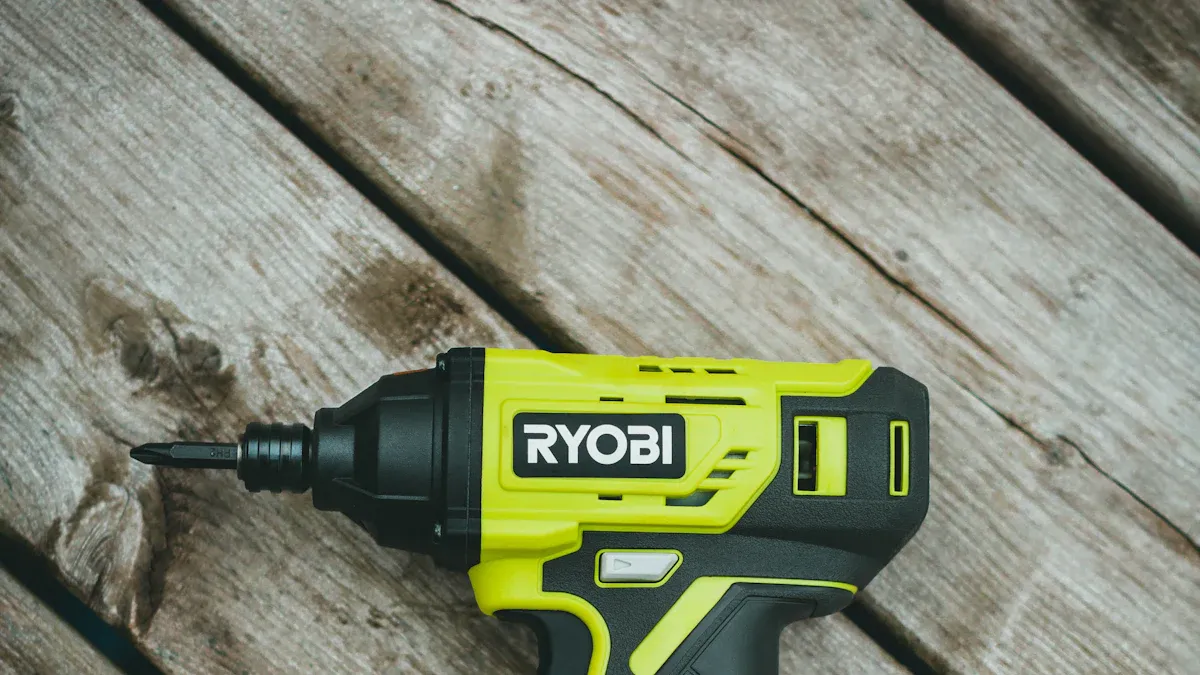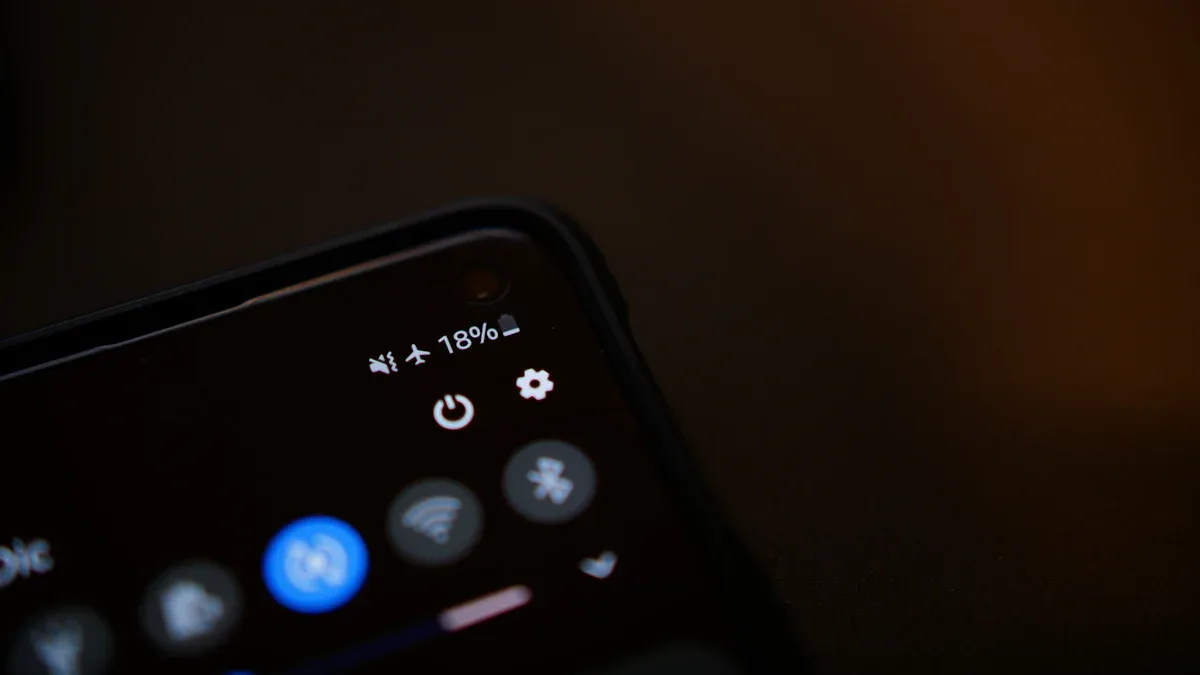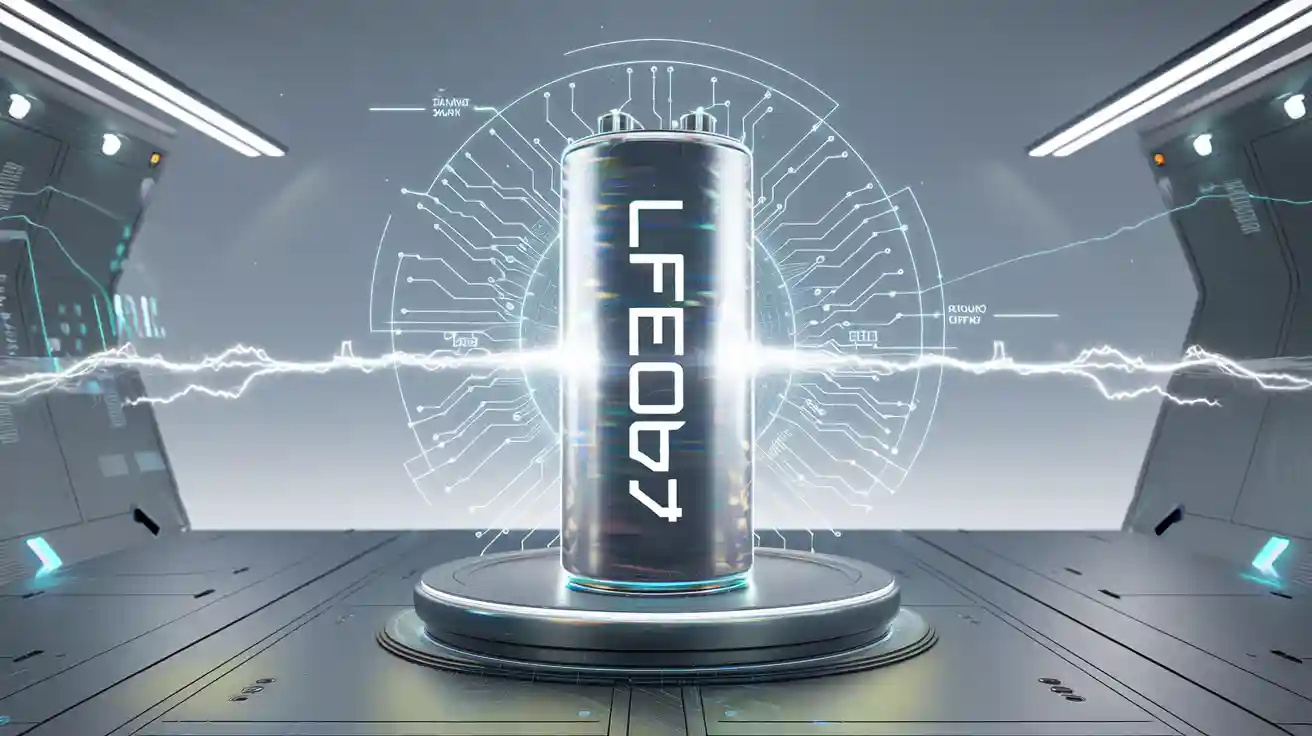Influence of High Current Pulse Discharge on LiFePO4 Battery
High Current Pulse Discharge can change how a lithium iron phosphate battery works. It can also change how long the battery lasts. Studies show that dynamic discharge profiles copy real-world use. These profiles can help the battery last up to 38% longer than constant current discharge. High current pulses make the battery’s internal resistance go up. They can also make the battery lose its capacity faster. This is important for devices that need quick bursts of power, like electric vehicles. Researchers say chemical changes inside the battery can affect how it works. For example, LiF can form on the negative electrode. This can change battery performance. Knowing about these changes helps engineers make better batteries. It also helps them control heat, resistance, and cycle life.
Key Takeaways
- High current pulse discharge can make batteries last up to 38% longer than constant current discharge. This is good for devices that need quick bursts of power.
- Using high current pulses makes internal resistance go up. But it also helps stop the battery from losing too much capacity. This lets batteries work better for a longer time.
- Keeping the battery at the right temperature is very important. It stops the battery from getting too hot and helps it last longer.
- Checking the SEI film on the battery's negative electrode often can help find problems early. This can also make the battery safer.
- Following best practices, like using the right charger and not charging too much or too little, can help the battery last longer and work better.
High Current Pulse Discharge Effects

High current pulse discharge can change how these batteries work in many ways. These changes can make the battery’s inside resistance go up. They also affect how long the battery lasts and how it gets older. Scientists have looked at these effects to help people use batteries safely and well.
Performance Changes
High current pulse discharge makes the battery act differently. The table below lists the main changes:
| Performance Change | Description |
|---|---|
| Internal Resistance | High-rate pulse discharge makes inside resistance go up fast. |
| Capacity Decline | The battery loses 6% capacity every 20 cycles at 1C after 15C pulse discharge, but loses 14% with constant discharge. |
| SEI Film Composition | LiF goes up a lot in pulse mode (23%) compared to constant discharge (5.3%), which changes how ions move. |
| Charge Exchange Resistance | This goes up because the SEI film grows and the contact area gets bigger, so voltage rises fast. |
High current pulse discharge also changes how the voltage looks and how much energy is used. The next table shows these results:
| Key Findings | Description |
|---|---|
| High-amplitude AC effects | High-amplitude AC can cause microcycling, which lets more charge move but can hurt the battery. |
| Frequency impact | Low-frequency AC makes the battery get worse faster, but high-frequency AC can be blocked by the battery’s double-layer capacitance. |
| Voltage polarization | AC makes voltage polarization, which shows the battery is getting older. |
These changes mean high current pulse discharge can make the battery age faster in some ways. But it can also help the battery lose less capacity than with constant current discharge.
Internal Resistance Increase
Internal resistance is very important for how well a battery works. High current pulse discharge makes this resistance go up. The table below shows how resistance changes with different pulse times and discharge rates:
| Pulse Duration | Discharge Rate | Resistance Difference (mΩ) |
|---|---|---|
| 2 seconds | 1 C | 0.73 |
| 10 seconds | 1 C | 0.39 |
| 10 seconds | 15 C | 0.39 |
- Pulsed current discharge makes the battery lose less power and capacity than constant current discharge.
- Capacity fade gets better by 2% and power loss drops by 8.7% with pulsed current.
- The rise in internal resistance is not as big during high current pulse discharge as it is with constant current discharge.
These results show that using high current pulse discharge can help the battery work better for longer, even though resistance still goes up.
Cycle Life at High C-Rates
Cycle life means how many times a battery can be charged and used before it stops working well. High current pulse discharge changes this cycle life, especially when the C-rate is high. The table below shows what happens in different cases:
| Condition | Average Cell Temperature Difference | Predicted Additional Cycles |
|---|---|---|
| MFM/PCM-ATM (11.25C) | 2.27 °C | 249 |
| MFM/PCM-ATM (20C) | 3.83 °C | 272 |
| Al-ATM | Higher temperatures lead to faster aging | N/A |
- High heat and high discharge rates hurt lithium iron phosphate batteries more.
- Tests show that after 250 to 300 cycles, the battery almost cannot be used.
If the battery gets too hot and is used at high rates, it gets damaged faster. This makes the battery not last as long. The C-rate during high current pulse discharge also changes how the battery gets older. When the C-rate is over 1.5 C, the battery gets hotter. This extra heat makes damage happen faster inside the battery. At 3 C, inside resistance goes up quickly, and the battery loses power faster. High charging rates can even cause lithium plating, which is dangerous and makes the battery lose power fast.
Note: High current pulse discharge can help lower some kinds of damage compared to constant current discharge, but it still puts stress on the battery. People should check for signs of the battery getting too hot or losing power.
Lithium Iron Phosphate Battery Properties
Chemical Stability
A lithium iron phosphate battery is known for being very stable. Its structure has iron, phosphorus, and oxygen atoms. These atoms are held together by strong covalent bonds. The strong bonds help stop the battery from getting too hot. This lowers the chance of thermal runaway. The battery’s chemical makeup keeps it safe, even with high current pulse discharge. Because of this, the battery does not react much with other things inside. This helps stop fires or explosions from happening.
The table below lists the main features of chemical stability:
| Characteristic | Description |
|---|---|
| High Current Capability | Handles high discharge rates, with continuous discharge up to 10C and pulse discharge up to 20C. |
| Excellent Thermal Stability | Works well at high temperatures, from 65 to 95°C. |
| Long Cycle Life | Lasts over 2000 cycles with little effect from deep discharge. |
| Enhanced Safety | Has low resistance and a high thermal runaway threshold. |
| Tolerance to Abuse | Can survive full discharge to zero volts without damage. |
- The battery’s strong bonds help keep it stable.
- Its chemical stability makes dangerous reactions less likely.
Suitability for High Current
A lithium iron phosphate battery works well with high current. It can charge and discharge very fast. This makes it good for electric cars and power tools. The battery stays safe during quick charging and discharging. It does not lose much power, even after many uses.
| Property | Description |
|---|---|
| High safety | Performs well against over-charging, over-discharging, and high temperatures. |
| Long cycle life | Handles thousands of deep charge and discharge cycles. |
| Fast charging and discharging | Allows quick charging and discharging. |
| Lower energy density | Stores less energy than some other battery types. |
Note: Compared to other lithium-ion batteries, this battery gives steady current. It may not charge as fast as some others, but it stays safe and stable under stress.
- The battery’s design lets it handle high current without getting too hot.
- It keeps working well, even in hard situations.
Thermal and Degradation Impacts
Thermal Effects
Temperature changes can really affect how these batteries work. When a battery gets a high current pulse, it heats up fast. This heat can change how safe the battery is. It also changes how well the battery works. Scientists found that temperature changes cause different effects.
- Temperature decides how much energy the battery gives and what voltage it shows.
- If it is cold, the battery’s inside resistance goes up. This slows chemical reactions and lowers the energy the battery gives.
- If it is hot, lithium ions move faster. The battery can give more energy than normal.
- When the battery is cold, it can warm up as it works. This heat can change the voltage as the battery keeps running.
If the battery gets too hot, it gets old faster. High heat can also make the battery less safe. Engineers check battery temperature to keep it working well and stop problems early.
Tip: Using the battery at the right temperature helps it last longer and work better.
Degradation Products
When these batteries are used many times, they change inside. These changes make new things called degradation products. Some of these products block lithium ions from moving. This makes the battery lose power over time.
The most common degradation products are:
- A layer called SEI film grows on the negative electrode.
- Lithium fluoride (LiF) forms and slows down ion movement.
- Other compounds build up and raise the battery’s resistance.
These changes make the battery lose capacity. The battery cannot hold as much energy as before. Over time, the battery may also have bigger voltage drops and get hotter when used. If engineers know about these products, they can make batteries that last longer and stay safer.
Pulse vs. Constant Current Discharge

Capacity Fade Comparison
Scientists look at how batteries lose power in different ways. With constant current discharge, the battery gives energy at a steady speed. In pulsed current discharge, the battery sends out energy in quick bursts. These two ways change how long the battery lasts.
Many tests show pulsed current discharge slows down power loss. For example, batteries with high-rate pulse discharge lost only 6% of power every 20 cycles at 1C after a 15C pulse. But batteries with constant current discharge lost 14% of power in the same time. This means pulsed current discharge helps the battery keep more power for longer.
The table below shows how much power is lost:
| Discharge Mode | Capacity Loss per 20 Cycles (at 1C after 15C pulse) |
|---|---|
| Pulsed Current | 6% |
| Constant Current | 14% |
Pulsed current discharge also helps stop resistance from rising too fast. Batteries with pulsed discharge lose 8.7% less power than those with constant current. This makes pulsed discharge better for things like electric cars and power tools.
Note: Using pulsed current can help batteries last longer and work better, especially when lots of power is needed.
Failure Mechanisms
Batteries can stop working in different ways based on how they are used. Constant current discharge often makes the battery get hotter. This extra heat makes chemical reactions happen faster inside the battery. Over time, these reactions make thick layers on the electrodes. These layers block lithium ions and make the battery lose power faster.
With high-rate pulsed discharge, the battery gets short times of high stress. But the breaks between pulses let the battery cool down. This cooling helps slow down the growth of bad layers, like SEI film and lithium fluoride. Because of this, the battery gets old more slowly.
Researchers found pulsed current discharge leads to less buildup of harmful stuff. For example, lithium fluoride on the negative electrode goes up to 23% in pulse mode, but only 5.3% in constant current. This change affects how ions move but does not block them as much as in constant current discharge.
The main ways batteries fail are:
- SEI film grows on the negative electrode
- Lithium fluoride and other compounds form
- Internal resistance goes up
- The battery loses active lithium
Pulsed current discharge slows down these problems. The battery stays cooler and can give power for more cycles.
Tip: To get the best use and longest life from a lithium iron phosphate battery, people should try high-rate pulsed discharge instead of constant current discharge.
People who want to learn more about battery care or have questions about the best way to use batteries can leave a comment or ask the website for help.
Electrochemical Analysis
Impedance Changes
Scientists use a special test to see how a battery works inside. This test is called electrochemical impedance spectroscopy. It helps them find out about resistance and other key things. When a lithium iron phosphate battery gets high current pulse discharge, its impedance changes as time goes on. The most important part is called charge transfer impedance. This number tells how easily ions move between the electrode and the electrolyte.
If the charge transfer impedance is low, the battery gives power fast. High current pulses can make this number go up. When charge transfer impedance gets higher, the battery does not work as well. The table below shows how impedance changes after many cycles:
| Cycle Number | Charge Transfer Impedance (Ω) | Power Output (%) |
|---|---|---|
| 0 | 0.12 | 100 |
| 100 | 0.18 | 92 |
| 200 | 0.25 | 85 |
Scientists say people should check impedance often. This helps find early signs that the battery is getting old.
SEI Film Evolution
The SEI film forms on the negative electrode when the battery is used. This thin layer keeps the battery safe but can slow down ion movement. High current pulse discharge changes how the SEI film grows and looks. Over time, the film can get thicker and not stay even.
- A thin SEI film helps the battery work better.
- If the film is thick or uneven, resistance goes up and battery life goes down.
- High current pulses can make the SEI film grow faster.
Researchers found the SEI film has more lithium fluoride after pulsed discharge. This change can block some lithium ions from moving. The battery then loses power and cannot hold as much energy. Checking the SEI film often helps engineers make safer and better batteries.
If readers want to learn more about battery health or have questions, they can leave a comment or ask the website.
Practical Implications
Application Recommendations
Lithium iron phosphate batteries work well with high current pulse discharge. Many industries use these batteries for hard jobs. For example, eVTOL aircraft need batteries that give a lot of power fast when taking off. The table below shows how these batteries do in these jobs:
| Application | Discharge Rate | Duration | Findings |
|---|---|---|---|
| eVTOL | 15C | 45 s | Batteries must handle high discharge rates for safe takeoff. |
To help these batteries last longer and work better, users should follow some simple rules:
- Keep the battery at the right temperature to stop it from getting too hot.
- Do not let the state of charge go too high or too low.
- Try not to use all the battery’s power each time.
- Make sure all cells get charged evenly.
- Good quality batteries work better and last longer.
- Use a charger made for LiFePO4 batteries.
- Always follow the maker’s rules for charging and using the battery.
- Do not charge or use the battery past its safe voltage.
Tip: Doing these things helps the battery stay strong and last longer, even when used a lot.
Future Research
Scientists are still learning about how high current pulse discharge changes these batteries. Some things are still not clear:
- Researchers do not know exactly how the battery changes inside during high current pulses.
- Current models do not show all the changes that happen when the battery is used and then rests.
- More studies are needed to see how high current rates change the battery.
These questions show there is more to learn. New research will help make safer and longer-lasting batteries. If readers want to know more or have questions, they can ask or leave a comment on the website.
High current pulse discharge can change these batteries in many ways. The table below lists the main effects:
| Key Effect | Description |
|---|---|
| Increased Internal Resistance | High-rate pulse discharge makes inside resistance go up fast. |
| Decomposition of LiPF6 | More LiF forms and this changes how ions move. |
| Capacity Decline | The battery loses power faster with constant discharge than with pulse mode. |
| Charge Exchange Resistance | Higher resistance and polarization can make the battery stop working. |
| SEI Film Composition | The SEI film changes and this affects how ions move. |
Experts say lithium iron phosphate batteries are good for tough jobs. They are safe, last a long time, and are a good deal. Many companies use these batteries because they work well and save money. Scientists will keep studying them to help batteries last longer and be even safer for everyone.
-

 May.2025.11.24Ternary Lithium Battery vs Lithium-ion: Complete Comparison Guide (2025 Edition)Learn More
May.2025.11.24Ternary Lithium Battery vs Lithium-ion: Complete Comparison Guide (2025 Edition)Learn More -

 May.2025.11.214S2P 18650 14.8V Battery: Complete Technical Guide, Specs, Applications & SafetyLearn More
May.2025.11.214S2P 18650 14.8V Battery: Complete Technical Guide, Specs, Applications & SafetyLearn More -

 May.2025.11.18PCM vs BMS in Lithium Batteries: What’s the Difference and Which One Do You Need?Learn More
May.2025.11.18PCM vs BMS in Lithium Batteries: What’s the Difference and Which One Do You Need?Learn More -

 May.2025.11.17Custom Li-ion Battery Design for Medical Devices (2025 Comprehensive Guide)Learn More
May.2025.11.17Custom Li-ion Battery Design for Medical Devices (2025 Comprehensive Guide)Learn More -

 May.2025.11.17The Future of Lithium-Ion Batteries: Innovation, Sustainability, and Global Market TrendsLearn More
May.2025.11.17The Future of Lithium-Ion Batteries: Innovation, Sustainability, and Global Market TrendsLearn More
















